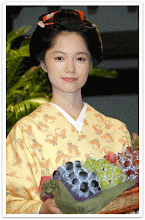Our latest book has just been released on Amazon! It is available in traditional paperback & Kindle formats. Available on Amazon US / Brazil / India / Europe / Mexico / and Japan!
Thursday, May 22, 2014
Friday, May 16, 2014
A Taste of Tea Part II
Earlier this year we had written about the Chado Tea Ceremony demonstration last February at the Japanese American National Museum. After speaking with our host Mrs. Miki Gill who spoke on behalf of Mrs. Sofu Hamano, Member of Urasenke Tankokai LA Association, we were offered an opportunity to participate in a private Tea Ceremony where we could embellish the experience in the proper setting of a real Japanese tea house. As such opportunities do not come often; we kindly accepted their offer this time bringing my wife along who had won a chance to partake in the last demonstration but were unable to. Talk about make up gifts! What we were in for far exceeded our wildest imaginations. As you read on, you will understand why.
We have seen many elaborate Tea Ceremony depicted in films and Television going back to James Clavell’s Shogun but nothing can possibly compare to experiencing a formal Tea Ceremony in its proper setting. To put it figuratively, we were entering the domain once privately reserved for powerful warlords of the likes of Oda Nobunaga and Tokugawa Ieyasu. Despite being situated outside of Japan, the minute we crossed through the small wooden gate reminiscent of those still found in old Samurai mansions carefully preserved in Kagoshima, the veneer of being in Southern California slipped away as we stepped back in time into another world; - A world of the great Tea Master Rikkyu of the Warring States Period and to a reality of its own.
My wife & I had followed Mrs. Cheiko into a small Zen like tatami lined room which we found upon appearance indistinguishable from the serene inviting tea rooms seen on NHK documentaries. Instantly, we were instantly greeted with the fresh aroma of pine and tatami that reminded us of our last visit to the Grand Tsubaki Shinto Shrine up north in Washington State. So tranquil a setting, the modern world outside no longer existed and the best part was yet to come. Once situated, we would enter our names into their guestbook and wait to be taken to the main room via a small stone lined path of a small hidden garden. As guests, we cordially followed the instructions in the time honored etiquette of our hosts. In such a setting, one cannot stress enough the importance of etiquette in such a formal setting which made us feel right at home and not out of place in traditional Japanese attire. Both hosts and guests are expected to adhere to tradition which makes for a welcome formality leaving no one feeling out of place.
From this point on we had immersed ourselves into this beautiful hidden world an ocean away from Japan’s shores and yet feeling as if we were truly there. Every detail from the carefully placed stepping stones, to the simple yet meaningful flower arrangements let you know where you were. We were in the presence of a real tea master whose linage could be traced back to the great master himself. As for her students, not one detail is remiss. They move with dignified grace with their carefully choreographed movements and skills respective to their master’s teachings which has been perfected over generations. When the student achieves this level of mastery, every gesture flows in a delicate yet tranquil balance like the way a Sakura petal flows atop a stream. This art form has taken generations of tea masters of the Urasenke Tradition to perfect going back to the 16th Century Tea Master Rikkyu. One could clearly see how this combined blend of ceremony & ritual attained its cultural prominence in Japan which lucky for us endures to this day. As I looked out to the open panel towards the distant mountains and the surrounding Los Angeles basin, I could not help but think of what magnificent view Takeda Shingen must have had atop his mountain castle in Kai from such a setting. The thought and preparation to create such a space that evokes such imagery is part of what makes Japanese Tea Ceremony so unique.
For people who still do not understand Japanese Tea Ceremony, there is more to this than simply preparing tea. There is careful consideration and great care given to every detail from the choice of implements to the choice appropriate tea cups to be served to meet the specific individual guests. What we cannot tell you is the exact step by step procedures nor could we properly describe it any way that could do it justice. The reason being it takes a long time to train these techniques and to understand the intricate meanings behind every motion and dignified gesture. That being said, there is no way in the course of one day one could possibly learn enough to share with you nor would we try to attempt to. But what we can tell you in layman’s terms is that Tea Ceremony is a precise living embodiment of the Zen like aspiration to achieve the perfection of the one thing. And in that purpose Hamano Sensei had masterfully succeeded in achieving that goal. We at American Mishima were deeply honored to Hamano Sensei for giving us this opportunity to experience such a beautiful Tea Ceremony which we will treasure for a lifetime!
If you would like to learn more about the fine art of Japanese Tea Ceremony or wish to learn how to serve tea in the Urasenke Tradition here in the United States please visit their beautiful website at:
Subscribe to:
Posts (Atom)



























